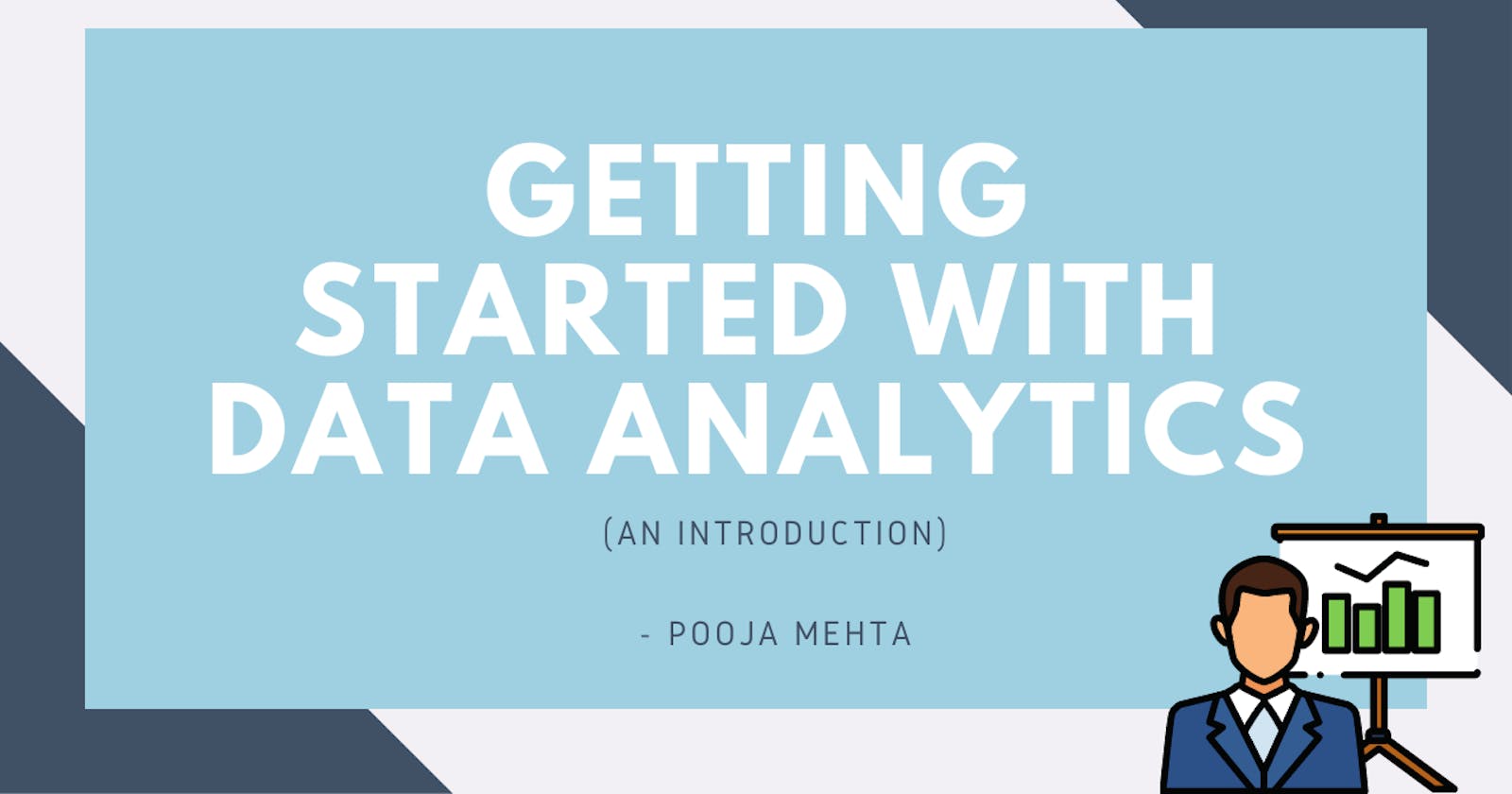What is Data?
Data can be defined as a collection of facts which can be in the form of numbers, pictures, videos, words, and more.
What is Dataset?
A collection of data that can be manipulated or analyzed.
What do you mean by the term Data Analytics?
The term data analytics refers to the process of examining datasets to draw conclusions about the information they contain.
What is Data Analysis?
Data Analysis is the process of collecting, transforming, and organizing data in order to draw helpful conclusions, make predictions and drive informed decision-making.
Who is a Data Analyst?
A data analyst is someone who scrutinizes information using data analysis tools. The meaningful results they pull from the raw data help their employers or clients make important decisions by identifying various facts and trends.
What does a Data Analyst do?
- Improve processes.
- Identify opportunities and trends.
- Launch new products.
- Provide great customer service.
- Make thoughtful decisions.
Areas where you can apply the Data Analytics skill:
- Health Care
- Finance
- Communications
- Government Consumer products
- And lots more!
Six Phases of data analysis:
- Ask questions and define the problem.
- Prepare data by collecting and storing the information.
- Process data by cleaning and checking the information.
- Analyze data to find patterns, relationships, and trends.
- Share data with your audience.
- Act on the data and use the analysis results.
What are Data Ecosystems?
The various elements interact with one another in order to produce, manage, store, organize, analyze, and share data.
What is Cloud?
It is a place where you can keep data online, rather than on a computer hard drive.
Project-based Data Analytics Life Cycle has five simple steps:
- Identifying the problem.
- Designing data requirements.
- Pre-processing data.
- Data Analysis.
- Data Visualizing.
What is data-driven decision-making?
Based on the information available in form of data, you guide a business strategy based on business needs.
Define Data Science?
Data science is the field of study that combines domain expertise, programming skills, and knowledge of mathematics and statistics to extract meaningful insights from raw data to create new ways of modeling and understanding the unknown.
Data Science encompasses three disciplines:
- Machine Learning
- Statistics
- Analytics
What is Analytical thinking?
Identifying and defining a problem and then solving it by using data in an organized, step-by-step manner.
What is GAP Analysis?
A method for examining and evaluating how a process works currently in order to get where you want to be in the future.
Data Life Cycle:
Plan-Business decides what kind of data it needs.
Capture-Data is collected from a variety of different sources.
Manage-How we take care of our data, how and where it is stored and tools used to keep it safe, and actions are taken to maintain it properly.
Analyze-Data is used to solve problems, make great decisions, and support business goals.
Archive-Storing data in a place where it is still available, but may not be used again.
Destroy-Useful for protecting the company's private information.
What is Database?
A collection of data stored in a computer system.
What is Query Language?
A computer programming language that allows to retrieve and manipulate data from a database.
What is Data Visualization?
Graphical representation of data. Eg: Graphs, Maps, and Tables
What is Data Strategy?
The management of the people, processes, and tools used in data analytics.
Data Analysis tools:
- Spreadsheet: Microsoft Excel and Google sheets(Popular).
- Query Language: MySQL, Microsoft SQL Server, and BigQuery.
- Visualization Tools: Tableau, ZoomData and Looker.
Hope you found it helpful 😊!
